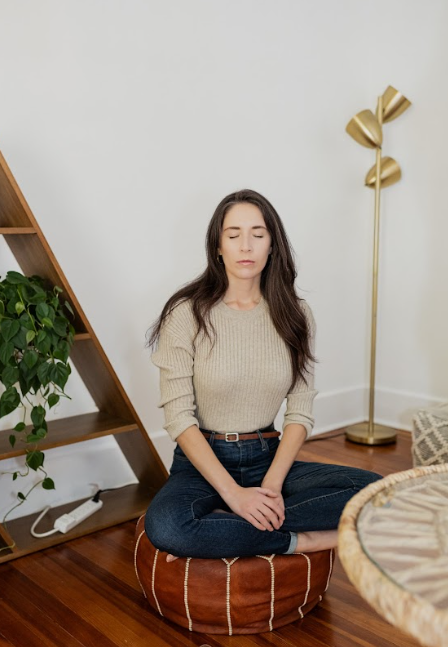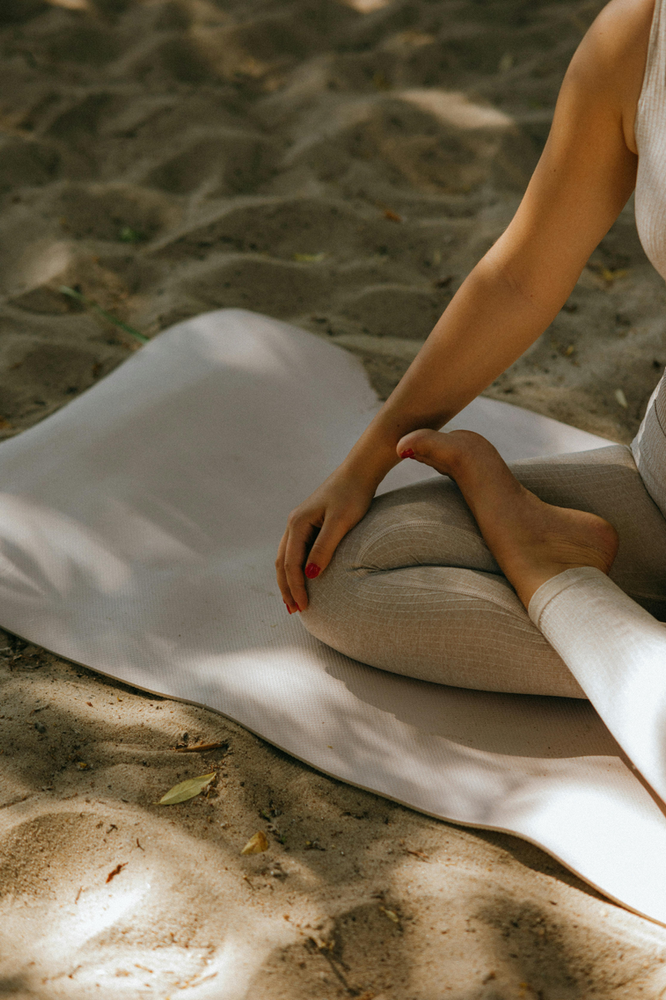Introduction
Meditation is often viewed as a practice reserved for monks, spiritual gurus, or those with hours of free time to sit in silence. However, meditation is accessible to everyone and has transformative benefits for mental, emotional, and physical health. Yet, many people hesitate to start meditating because they don’t know how to do it “properly.”

The truth is, there is no one-size-fits-all approach to meditation, and what matters most is finding a method that resonates with you.
In this blog, we’ll explore the essentials of meditation, debunk myths, and provide actionable tips to help you build a consistent practice.
Key Takeaways
-
Meditation is a versatile and accessible practice for everyone, regardless of experience level.
-
Common myths, such as the need for complete silence or years of practice, can be overcome with a beginner’s mindset.
-
There are many types of meditation to suit different preferences, from breath-focused to movement-based practices.
-
Consistency is more important than duration; even a few minutes a day can lead to significant benefits.
-
Clinicians at Be Your Best Self & Thrive can provide personalized guidance to help you integrate meditation into your life.
What Is Meditation?
At its core, meditation is the practice of focusing your attention and achieving a state of calm and clarity. While there are many forms of meditation, such as mindfulness, loving-kindness, and transcendental meditation, they all share the goal of helping you become more present and connected to yourself. Meditation isn’t about emptying your mind of thoughts but learning to observe them without judgment.
Meditation has roots in ancient spiritual traditions, including Buddhism, Hinduism, and Taoism, but today it’s widely practiced in secular contexts as well. Whether you’re seeking stress relief, emotional balance, or spiritual growth, meditation can serve as a valuable tool.
Common Misconceptions About Meditation
Many people shy away from meditation because they believe in certain myths that make the practice seem intimidating. Let’s debunk some of the most common misconceptions:
-
You Have to Sit Perfectly Still: While traditional meditation often involves sitting, you can meditate while walking, lying down, or even doing household chores.
-
Your Mind Must Be Completely Silent: Thoughts will arise, and that’s okay. Meditation teaches you to observe your thoughts without getting carried away by them.
-
It Takes Years to See Benefits: Even a few minutes of daily meditation can lead to noticeable improvements in stress levels, focus, and emotional regulation.
-
Meditation Is Only for Spiritual People: Meditation is for everyone, regardless of religious or spiritual beliefs. It’s a universal practice that supports mental well-being.
Benefits of Meditation
Meditation has been scientifically proven to offer a wide range of benefits, including:
-
Reduced Stress and Anxiety: Regular meditation lowers cortisol levels, helping you feel calmer and more balanced.
-
Improved Focus and Concentration: Meditation enhances your ability to stay present and concentrate on tasks.
-
Better Emotional Regulation: By observing your thoughts and feelings, you learn to respond rather than react.
-
Enhanced Physical Health: Meditation has been linked to lower blood pressure, improved sleep, and reduced chronic pain.
-
Greater Self-Awareness: Meditation helps you tune into your inner world, fostering personal growth and understanding.
How to Get Started

If you’re new to meditation, here’s a simple guide to help you get started:
-
Choose a Quiet Space: Find a place where you won’t be interrupted. It doesn’t have to be perfectly silent; even a cozy corner of your home will work.
-
Set a Timer: Start with just 3-5 minutes. You can gradually increase the time as you become more comfortable.
-
Focus on Your Breath: Close your eyes and take slow, deep breaths. Pay attention to the sensation of air entering and leaving your body.
-
Acknowledge Distractions: When your mind wanders, gently bring your focus back to your breath without judgment.
-
End with Gratitude: Take a moment to thank yourself for dedicating time to your well-being.
Overcoming Common Challenges
Meditation isn’t always easy, especially at the beginning. Here are some common challenges and how to overcome them:
-
Restlessness: If sitting still feels impossible, try a movement-based meditation like yoga or walking meditation.
-
Lack of Time: Meditation doesn’t have to be lengthy. Start with one minute and build from there. Even brief moments of mindfulness can make a difference.
-
Self-Criticism: Meditation is practice, not performance. Be kind to yourself, and remember that every session is valuable, even if it feels imperfect.
-
Drowsiness: If you tend to fall asleep during meditation, try practicing earlier in the day or sitting upright rather than lying down.
Types of Meditation to Try
If focusing on your breath doesn’t appeal to you, don’t worry! There are many types of meditation to explore:
-
Mindfulness Meditation: Focus on the present moment by observing your breath, bodily sensations, or surroundings.
-
Loving-Kindness Meditation: Cultivate compassion by silently repeating phrases like “May I be happy” or “May you be free from suffering.”
-
Body Scan Meditation: Mentally scan your body from head to toe, noticing areas of tension or relaxation.
-
Guided Meditation: Use apps or videos where a teacher guides you through the practice.
-
Movement Meditation: Combine meditation with gentle movement, such as yoga, tai chi, or walking.
-
Sound Meditation: Focus on external sounds, such as nature noises or singing bowls, to center your mind.
Tips for Staying Consistent
Creating a regular meditation practice can be challenging, especially if you are busy or easily distracted. Here are some tips to help you stay consistent:
-
Start Small: Even one minute of meditation is better than none. Over time, you can gradually increase the duration.
-
Pair It with a Routine: Meditate at the same time every day, such as after waking up or before bedtime.
-
Use Technology Wisely: Apps like Calm, Headspace, or Insight Timer offer guided meditations and reminders.
-
Join a Group: Meditating with others can provide motivation and a sense of community.
-
Be Patient: Like any skill, meditation takes practice. Do not get discouraged if it feels difficult at first.
Clinician Feature: Experts Who Can Help
At Be Your Best Self & Thrive, our clinicians incorporate mindfulness and meditation techniques into their therapeutic practices. Here is how they can support your journey:
-
Rochelle Young: Rochelle specializes in anxiety, depression, and self-esteem. She often integrates mindfulness exercises into her sessions to help clients manage overwhelming emotions and build resilience.
-
Jessi Deleo: Jessi’s background in teaching acro-yoga allows her to combine movement with mindfulness. She encourages clients to explore meditation as a way to connect with their bodies and cultivate self-compassion.
-
Jamie Molnar: Jamie’s expertise in yoga psychology and mindfulness makes her a perfect guide for those looking to deepen their meditation practice. She emphasizes the importance of self-awareness and emotional balance through mindfulness.
Read our past blogs are Meditation:
Conclusion
Meditation is not about perfection but about showing up for yourself. Whether you have three minutes or thirty, the simple act of pausing and tuning in can have profound effects on your well-being. With so many styles and approaches to choose from, you are sure to find a method that resonates with you.
Q&A Section: Frequently Asked Questions About Meditation
Q: Do I need special equipment to meditate?
A: No, meditation does not require any special equipment. All you need is a comfortable space where you can sit or lie down. Optional items, like a meditation cushion, blanket, or calming music, can enhance the experience but are not necessary.
Q: How long should I meditate as a beginner?
A: Start with 3-5 minutes a day and gradually increase the time as you become more comfortable. Even short sessions can be effective.
Q: What if my mind keeps wandering during meditation?
A: It is normal for your mind to wander. Meditation is about noticing when it happens and gently bringing your focus back to your breath or chosen point of attention. Each time you do this; you are strengthening your ability to focus.
Q: Can meditation help with anxiety?
A: Yes, meditation is a powerful tool for managing anxiety. Techniques like mindfulness meditation can help you become more aware of your thoughts and emotions, reducing reactivity and promoting calmness.
Q: Is it okay to meditate lying down?
A: Absolutely! While sitting is the most common position, lying down can also work, especially if it helps you feel more relaxed. Just be mindful of the potential to fall asleep during practice.
Q: Are there apps or resources you recommend for beginners?
A: Yes, apps like Calm, Headspace, and Insight Timer are excellent for guided meditations. They also offer beginner-friendly courses and tools to help you establish a routine.
Q: Can children meditate too?
A: Yes, meditation can be adapted for children. Practices like guided imagery or short breathing exercises are great ways to introduce mindfulness to kids in a fun and accessible way.
Q: How often should I meditate to see results?
A: Consistency is key. Aim to meditate daily, even if it’s just for a few minutes. Over time, regular practice will lead to noticeable benefits.
A Message from the BYBS Content Creator
Thank you for taking the time to explore the world of meditation with us. I hope this blog has inspired you to start or deepen your meditation practice. Remember, there’s no “right” way to meditate—the best practice is the one that works for you. If you’re looking for additional support, our team at Be Your Best Self & Thrive is here to help.
Happy meditating!

Alayna Dorfman






